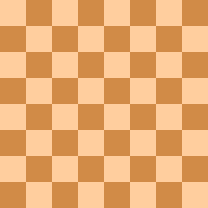2:08 PM In the game between Zlatozar Kerchev | |
Mieses–ReshevskyMieses–Reshevsky, 1935
A zwischenzug occurred in Mieses–Reshevsky, Margate 1935.From the position in the diagram, play continued:
L. Steiner–HellingL. Steiner–Helling, 1928
L. Steiner–Helling, Berlin 1928, provides another example of the zwischenschach (in-between check). Black has just captured White's pawn on f2 with his knight. White responded with 16.Qxf2, expecting the skewer 16...Bg3??, which he would refute with 17.Qxf7+! Rxf7 18.Re8#. Instead, Black first played the zwischenschach 16...Bh2+! Now 17.Kxh2 Qxf2 loses White's queen. The game continued 17.Kf1 Bg3! Not seeing the point, White blithely continued with his plan: 18. Qxf7+?? Rxf7+ Now White realized that he is in check (that was the point of 16...Bh2+!), so his intended 19.Re8# is illegal. The forced 19.Bxf7+ Kxf7 would leave Black with queen for rook, an easily winning material advantage, so White resigned (Horowitz & Reinfeld 1954:178–80) (Golombek 1977:354). Kerchev–KarastoichevKerchev–Karastoichev, 1965
In the game between Zlatozar Kerchev and Emil Stefanov Karastoichev, Black moved
| |
|
| |
| Total comments: 0 | |
